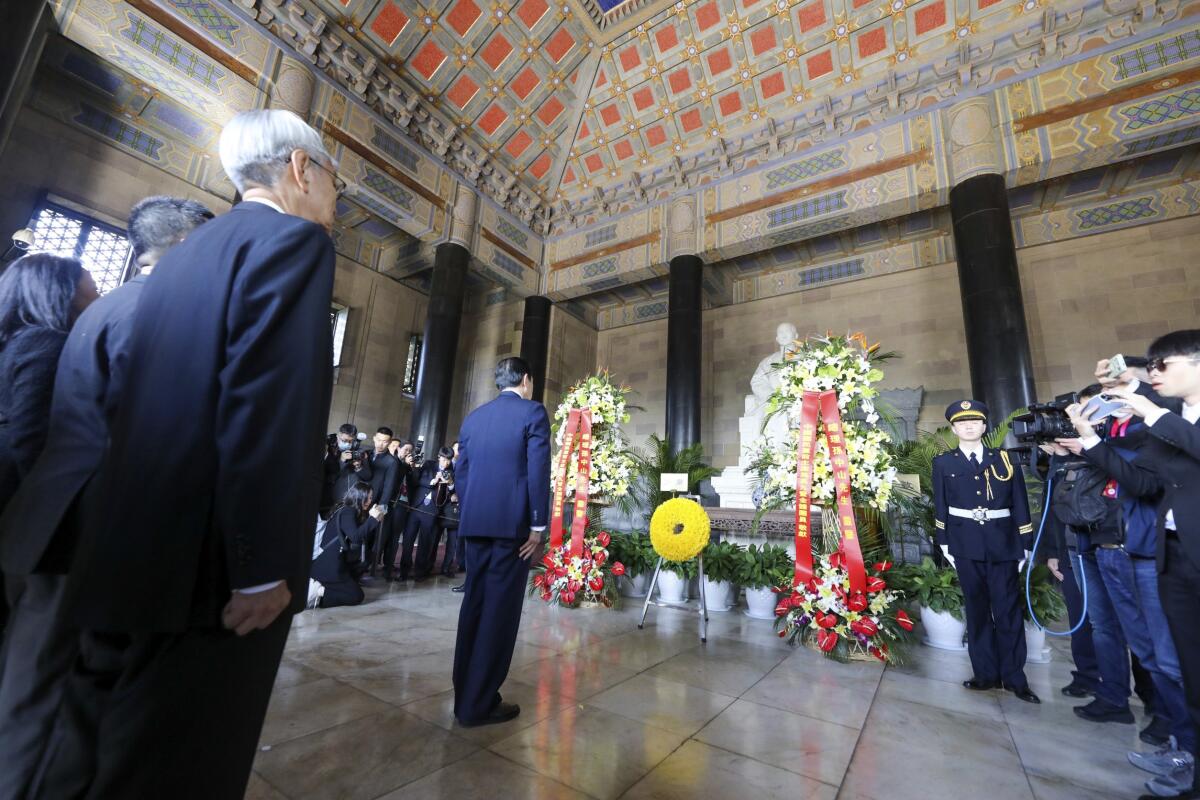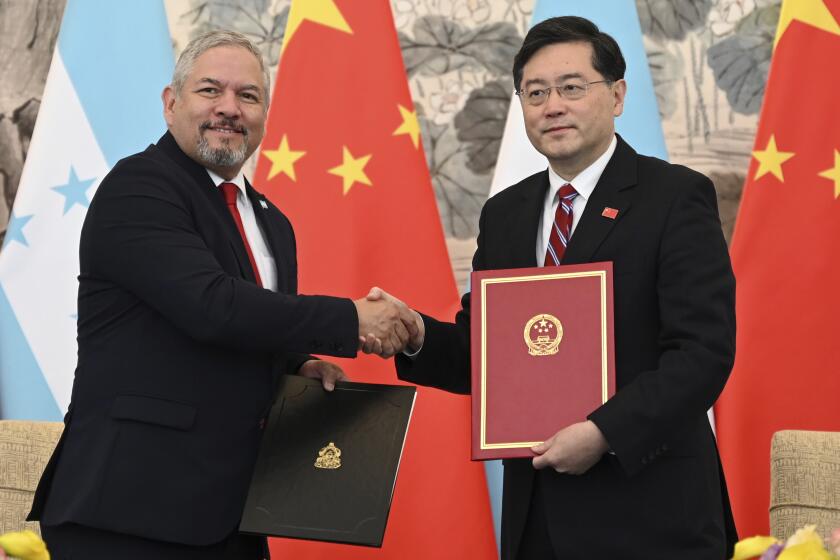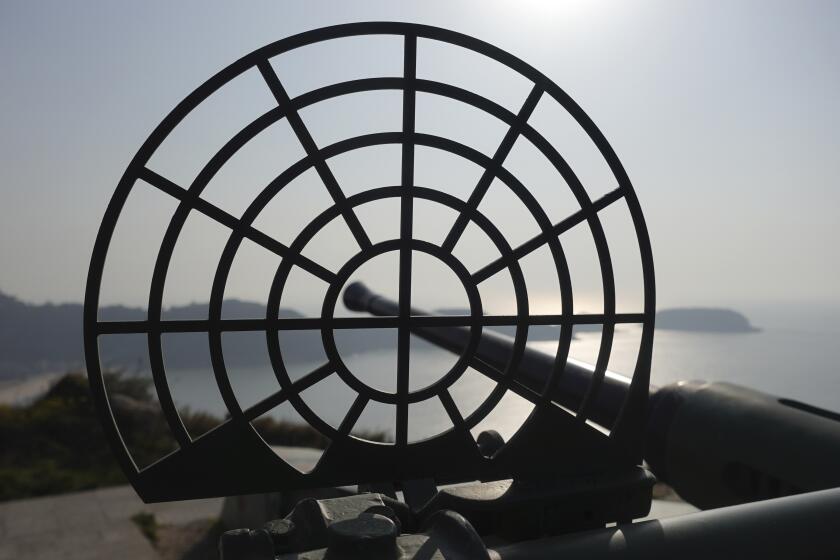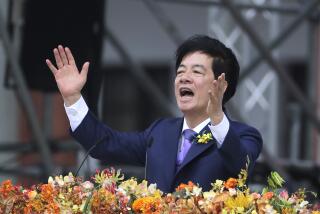In symbolism-laden tour, former Taiwanese leader visits Sun Yat-sen’s tomb in China

- Share via
NANJING, China — Former Taiwanese President Ma Ying-jeou began a 12-day tour of China with a symbolism-laden visit to the mausoleum where the founding father of both China and Taiwan is entombed.
Ma visited the Sun Yat-sen Mausoleum in Nanjing, the Chinese capital when Ma’s Nationalist Party, or Kuomintang, ruled China in the early part of the 20th century.
The party claimed to be the legitimate ruler of China for decades, after fleeing to Taiwan while the Communists assumed power on the mainland, and is seen as more sympathetic to integration or unification with the mainland than Taiwan’s current ruling Democratic People’s Party.
Ma paid tribute to Sun, the founder of the Republic of China and the Kuomintang, giving a short speech and then bowing in front of the memorial on Tuesday.
“The people of both sides of the Taiwan Strait belong to the Chinese nation, are children of Yandi and the Yellow Emperor,” he told a group of Chinese and Taiwanese reporters who had been allowed to follow him on the trip, referring to mythical emperors revered as founders of China’s dominant Han ethnicity.
Ma’s tour comes as tensions between Taiwan and China rise, aggravated by an antagonistic U.S.-China relationship. Taiwan is today a self-governed democracy, and the U.S. is its largest unofficial ally. China claims the island as its own.
The visit by Ma comes a few days after the government in Taipei lost yet another diplomatic ally to Beijing, which has spent the last seven years pressuring countries to switch diplomatic recognition from Taiwan to China.
Honduras has established diplomatic ties with China after breaking off relations with Taiwan, which is increasingly isolated and now recognized by only 13 sovereign states
He has framed the trip as an effort to lower tensions by promoting exchanges, and has brought Taiwanese college students with him. Observers expect the visit to be more symbolic than substantive.
“Both sides must pursue peace. Otherwise, neither will have a future,” he said of China and Taiwan.
Ma praised Sun, who advocated for a modern Chinese nation and the overthrow of the Manchu Qing Dynasty. It was Sun who founded the Republic of China in 1912 and ruled over the mainland, very briefly.
After the retreat to Taiwan, the Kuomintang continued to call the nation the Republic of China. Meanwhile, the Communist Party took over the mainland in 1949 and renamed the country the People’s Republic of China.
Outside the mausoleum, a crowd of curious onlookers and tourists gathered in the morning to see whether they could catch a glimpse of the former Taiwanese leader.
Residents of Taiwan’s outlying islands, near the mainland Chinese coast, have been without internet access since two undersea cables were severed.
Most of the regular tourists expecting to be able to see the mausoleum and the surrounding park found themselves blocked from entering, though a few who had reserved in advance were allowed into the site.
“Even though there are some difficulties on the official front, as long as there are benefits to the public and you can build a good foundation, then this will be good for the unification of both sides,” said Chen Shaoan, who had come to the mausoleum to see Ma.
Ma is also visiting the China Modern History Museum, which is the site of the old presidential palace in Nanjing.
More to Read
Sign up for Essential California
The most important California stories and recommendations in your inbox every morning.
You may occasionally receive promotional content from the Los Angeles Times.












